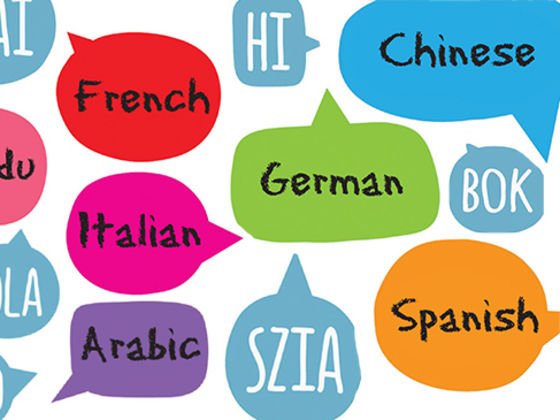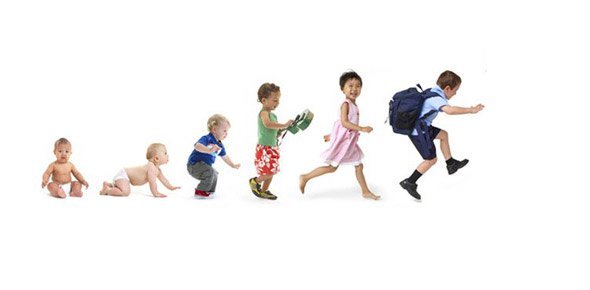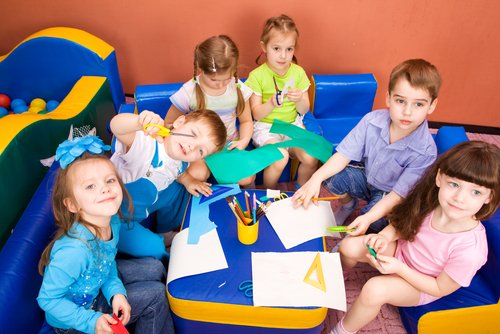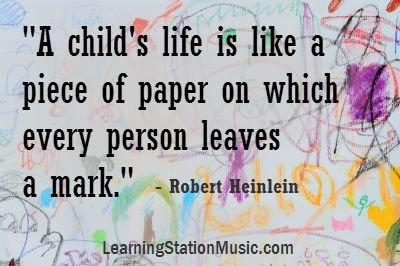The Development of Language is Related to the Ability to Represent Reality Mentally
The Development of Language is Related to the Ability to Represent Reality Mentally

Image Source
The child’s basic tasks are to learn the regularities of the physical and social environment and to store past experience in a form that can be used in current situations. In a complex society, there are so many physical objects, animals, and people that it is not possible for a child to remember each as a distinct entity.
Things must be categorized into inclusive groupings, such as houses, dogs, or girls. A category of objects and the cognitions that the individual has about members of that category makes up a schema. Schemas allow us to make sense of the world around us. Young children must learn schemas.
Learning language is an essential part of the process, because language provides the names around which schemas can develop. It is noteworthy that the first words that children produce are usually nouns that name objects in the child’s environment. At first, the child uses a few very general schemas. Some children learn the word “dog” at 12 to 14 months and then apply it to all animals—to dogs and other animal groups.

Image Source
Only with maturation and experience does the child develop the abstract schema “animals” and learn to discriminate between dogs and cats. Young children from age 6 to 8, rely on visual features, such as color and word length, and sort objects into numerous categories. Older children of age 10 to 12 increasingly use functional or superordinate categories, such as foods, and sort objects into fewer groups.
With age, children become increasingly adept at classifying diverse objects and treating them as equivalent. These skills are very important in social interaction. Only by having the ability to group objects, persons, and situations can one determine how to behave toward them. Person schemas and their associated meanings are especially important to smooth interaction. Even very young children differentiate people by age.
By about 2 years of age, children correctly differentiate babies and adults when shown photographs. By about 5, children employ four categories: little children, big children, parents, and grandparents. As children learn to group objects into meaningful schemas, they learn not only the categories but also how others feel about such categories.
Children learn not only that Catholics are people who believe in the Trinity, but also whether their parents like or dislike Catholics. Thus, children acquire positive and negative attitudes toward the wide range of social objects they come to recognize. The particular schemas and evaluations that children learn are influenced by the social class, religions, ethnic, and other subcultural groupings to which those who socialize them belong.

Image Source
To interact effectively with others, people must learn the social rules that govern interaction and in general adhere to them. Beliefs about which behaviors are acceptable and which are unacceptable for specific persons in specific situations are termed norms. Without norms, coordinated activity would be very difficult, and we would find it hard or impossible to achieve our goals.
An American child learns to say “please,” a French child “s’il vous plait,” and a Serbian child “molim te.” In every case, the child is learning the value of conforming to arbitrary norms governing requests. Learning language trains the child to conform to linguistic norms and serves as a model for the learning of other norms.
Gradually, through instrumental and observational learning, the child learns the generality of the relationship between conformity to norms and the ability to interact smoothly with others and achieve one’s own goals.

Image Source
References:
Child Development
What is Child Development?
Language Development
Language Development in Children
Cognitive Growth
The Origins of Identify and Self-Concept
Posted from my blog with SteemPress : https://steemme.000webhostapp.com/2018/08/the-development-of-language-is-related-to-the-ability-to-represent-reality-mentally
The domain for the pronunciation and knowledge of the words are learned in the child through repetition and simple examples, very good post, it is special for the preschool teachers ... I invite you to visit my blog ... thanks.
Children can learn through imitation of sound. Assimilation and accomodation are the two commonly modes of learning. I believe that famous guy Piaget had this cognitive stages of development too. Thanks for sharing this nice article!